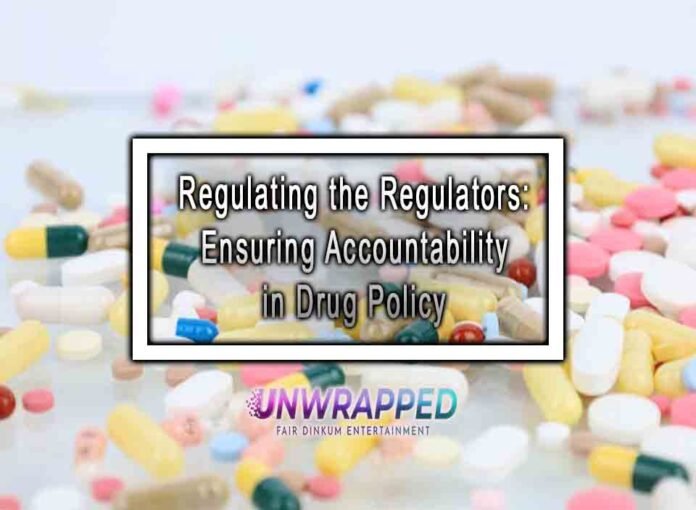As nations shift toward legalizing and regulating drugs, the responsibility of oversight falls on governments and regulatory agencies. While legalization can reduce the harms of prohibition, it introduces new challenges: ensuring that regulators and law enforcement agencies operate transparently, fairly, and without corruption. This article explores the importance of oversight mechanisms in a regulated drug market and strategies to prevent abuse of power and ensure equitable enforcement.
The Challenges of Regulation in Drug Policy
1. The Risk of Corruption
A regulated drug market involves substantial financial stakes, making it susceptible to corruption:
- Industry Influence: Companies may lobby regulators to gain favorable treatment or monopolize the market.
- Bribery and Misconduct: Unethical practices could lead to selective enforcement or the overlooking of violations.
2. Inequitable Enforcement
Without proper oversight, enforcement may disproportionately target marginalized communities:
- Bias in Policing: Even in a legalized market, racial and socioeconomic disparities in enforcement can persist.
- Unequal Access: Small businesses or equity applicants may face greater scrutiny than larger corporations.
3. Regulatory Capture
Large corporations might exert undue influence over regulators, creating policies that favor profit over public health:
- Monopolization: Big companies dominate the market, sidelining smaller competitors.
- Weakened Standards: Pressure to prioritize revenue over safety could lead to lenient regulations.
See Also: Data-Driven Decisions: Monitoring and Adapting Drug Policy Over Time
The Role of Oversight Mechanisms
1. Independent Regulatory Bodies
Establishing independent agencies ensures that oversight is impartial and transparent:
- Separation from Law Enforcement: Regulators should focus on compliance and consumer safety, distinct from policing agencies.
- Expertise-Driven Oversight: Staff agencies with professionals from public health, economics, and legal fields to balance competing interests.
Example: Canada’s cannabis market is regulated by Health Canada, an independent body focusing on public health and safety (Health Canada).
2. Transparency and Public Accountability
Transparency fosters trust and reduces the risk of corruption:
- Open Data: Publish data on licensing, enforcement actions, and revenue allocation.
- Public Oversight: Create mechanisms for citizen input, such as public comment periods and advisory boards.
Case Study: Washington State’s Cannabis Control Board publishes detailed reports on tax revenue, licensing approvals, and compliance audits, ensuring public accountability (Washington State Liquor and Cannabis Board).
Ensuring Fair Enforcement
1. Training and Education
Regulators and law enforcement must receive specialized training to ensure fair and consistent enforcement:
- Implicit Bias Training: Address potential biases in decision-making and enforcement actions.
- Standardized Protocols: Develop clear guidelines for inspections, compliance checks, and penalties.
Example: Portugal’s harm-reduction model includes training police officers to refer individuals to health services instead of penalizing them (Transform Drug Policy Foundation).
2. Equity in Licensing and Compliance
Implement policies that prioritize equity and fairness in regulatory processes:
- Social Equity Programs: Reserve licenses for individuals from communities disproportionately impacted by the War on Drugs.
- Accessible Licensing Processes: Reduce fees and simplify applications for small businesses and minority-owned enterprises.
Case Study: Illinois’ cannabis legalization law includes a social equity program to support applicants from historically over-policed areas (Illinois Department of Revenue).
3. Independent Audits
Regular audits ensure that regulations are being enforced fairly and effectively:
- Performance Audits: Evaluate the effectiveness of enforcement strategies and identify areas for improvement.
- Financial Audits: Monitor the allocation of tax revenue to prevent misuse and ensure funds are directed toward public services.
See Also: The End of the Drug War: What Happens to International Treaties?
Preventing Industry Influence
1. Strict Lobbying Regulations
Regulate interactions between the drug industry and policymakers:
- Lobbying Disclosures: Require companies to publicly disclose lobbying activities and expenditures.
- Conflict of Interest Policies: Prohibit regulators from having financial ties to the industry they oversee.
Example: Colorado’s cannabis industry is subject to strict lobbying disclosure rules, ensuring transparency in policy development (Colorado Department of Revenue).
2. Market Caps and Anti-Monopoly Laws
Prevent large corporations from dominating the market:
- Ownership Limits: Cap the number of licenses or market share any single company can hold.
- Support for Small Businesses: Provide grants, loans, and technical assistance to help smaller operators compete.
Engaging Communities in Oversight
1. Citizen Advisory Boards
Include community representatives in regulatory decision-making:
- Role: Advise regulators on public concerns, equity issues, and local impacts.
- Representation: Ensure diverse voices are included, particularly from communities historically affected by drug policies.
2. Community Reinvestment Programs
Allocate a significant portion of tax revenue to programs that benefit impacted communities:
- Education and Healthcare: Fund schools, addiction treatment programs, and public health initiatives.
- Job Training: Support workforce development programs for individuals reentering the job market after incarceration.
Case Study: California allocates cannabis tax revenue to youth programs, public safety, and mental health services (California Department of Tax and Fee Administration).
Global Examples of Oversight in Action
1. Canada: Centralized Oversight
Canada’s federal approach to cannabis regulation emphasizes public health, with independent provincial agencies managing licensing and enforcement:
- Transparency: Regular public reporting on licensing, inspections, and health outcomes.
- Focus on Equity: Programs to ensure Indigenous communities benefit from legalization (Health Canada).
2. Uruguay: State-Controlled Market
Uruguay’s government manages cannabis production and distribution, reducing the risk of industry influence:
- Strict Controls: The state oversees every step, from cultivation to sale.
- Public Accountability: Regular audits and transparent reporting ensure compliance with regulations (Uruguay Drug Observatory).
3. Portugal: A Health-Focused Model
Portugal decriminalized drugs in 2001, creating a regulatory system focused on harm reduction:
- Independent Monitoring: A specialized commission oversees compliance with public health objectives.
- Community Involvement: Local organizations play a key role in implementing harm reduction programs (Transform Drug Policy Foundation).
Conclusion: Building Trust Through Accountability
A regulated drug market has the potential to reduce harm, generate revenue, and promote social equity—but only if oversight mechanisms are robust, transparent, and fair. By preventing corruption, ensuring equitable enforcement, and engaging communities, governments can build trust and create a regulatory framework that prioritizes public health and social justice.
Imagine a system where:
- Regulators operate transparently and equitably, free from industry influence.
- Communities disproportionately impacted by prohibition are at the center of decision-making.
- Tax revenue is reinvested in public services, fostering trust and accountability.
In a legalized world, regulating the regulators is just as important as regulating the drugs themselves.
References
- Health Canada
Canada’s Cannabis Regulation - Transform Drug Policy Foundation
Portugal’s Decriminalization Model - Illinois Department of Revenue
Social Equity in Cannabis Licensing - Washington State Liquor and Cannabis Board
Cannabis Oversight Reports - Colorado Department of Revenue
Cannabis Tax and Compliance
See Also: One Step at a Time: Phased Implementation of Drug Legalization










